Russia metals sanctions on aluminium, copper, and nickel: Which ASX miners stand to benefit?
On Sunday, the UK and US governments introduced further punitive trade restrictions on Russia in response to its invasion of Ukraine in 2022. London Metals Exchange (LME) and CME warehouses can no longer accept aluminium, copper, and nickel originating or located in Russia on or after 13 April 2024.
The ban is in addition to earlier measures taken by the UK in December, which prohibited trading in metals but are entirely new from the perspective of the US. Here is the full list of metals impacted by the ban:
- Copper and articles thereof
- Nickel and articles thereof
- Aluminium and articles thereof
- Lead and articles thereof
- Zinc and articles thereof
- Tin and articles thereof
- Tungsten (wolfram) and articles thereof, including waste and scrap
- Molybdenum and articles thereof, including waste and scrap
- Tantalum and articles thereof, including waste and scrap
- Magnesium and articles thereof, including waste and scrap
- Cobalt mattes and other intermediate products of cobalt metallurgy, cobalt and articles thereof, including waste and scrap
- Bismuth and articles thereof, including waste and scrap
- Zirconium and articles thereof, including waste and scrap
- Antimony and articles thereof, including waste and scrap
- Manganese and articles thereof, including waste and scrap
- Beryllium, chromium. hafnium, rhenium, thallium, cadmium, germanium, vanadium, gallium, indium and niobium (columbium) and articles of these metals, including waste and scrap
- Cermets and articles thereof, including waste and scrap
- Tools, implements, cutlery, spoons and forks of base metal; parts thereof of base metal
- Miscellaneous articles of base metal
short & long-term impacts on metals markets & global economy
Most analysts believe the new bans on flows of Russian metals into LME and CME warehouses will have minimal initial shock value to markets as they’re only incremental from the UK’s perspective, and imports of base metals into the US from Russia had effectively shrunk to zero already due to prevailing punitive tariffs.
The longer-run impact of the latest crackdown may be more significant, though, as it will likely make it more difficult for traders to transact in metals that can no longer be stored or cleared through the LME and CME. This will likely create inefficiencies within metals markets which could hamper supply chains in the short to medium term.
Contrasting this, the new and existing bans will increasingly force Russia to divert its metals exports to sanction-neutral countries, particularly China, therefore forcing it to accept greater discounts. China represents roughly half of global aluminium and copper consumption and around 60% of global nickel consumption. So any increase in the discounting of metals China purchases will likely trickle through to the rest of the pricing system, likely having a dampening effect on prices.
One beneficial outcome not relating to metals markets but that is important for the global economy, relates to the fact that China is a major global producer of manufactured products. China is already experiencing a deflationary wholesale price environment (existing Russian sanctions are likely helping), and any extra discounts they can achieve on their input costs help them keep down the costs of their exports to the rest of the world.
Aluminium impact
Russia is responsible for around 6% of global aluminium production. It’s worth noting that Russian aluminium accounts for approximately 90% of current LME inventories. Essentially, traders have stocked up in anticipation of the bans. As these inventories run down, they must now be replenished from ex-Russian sources.
On this point, it’s important to remember that while China can buy all the cheap aluminium it wants from Russia, traders and UK and US industrial consumers generally have two only major options: LME and CME inventories. The new bans could tighten the supply coming from LME inventories, and therefore bolster prices in the short to medium term.
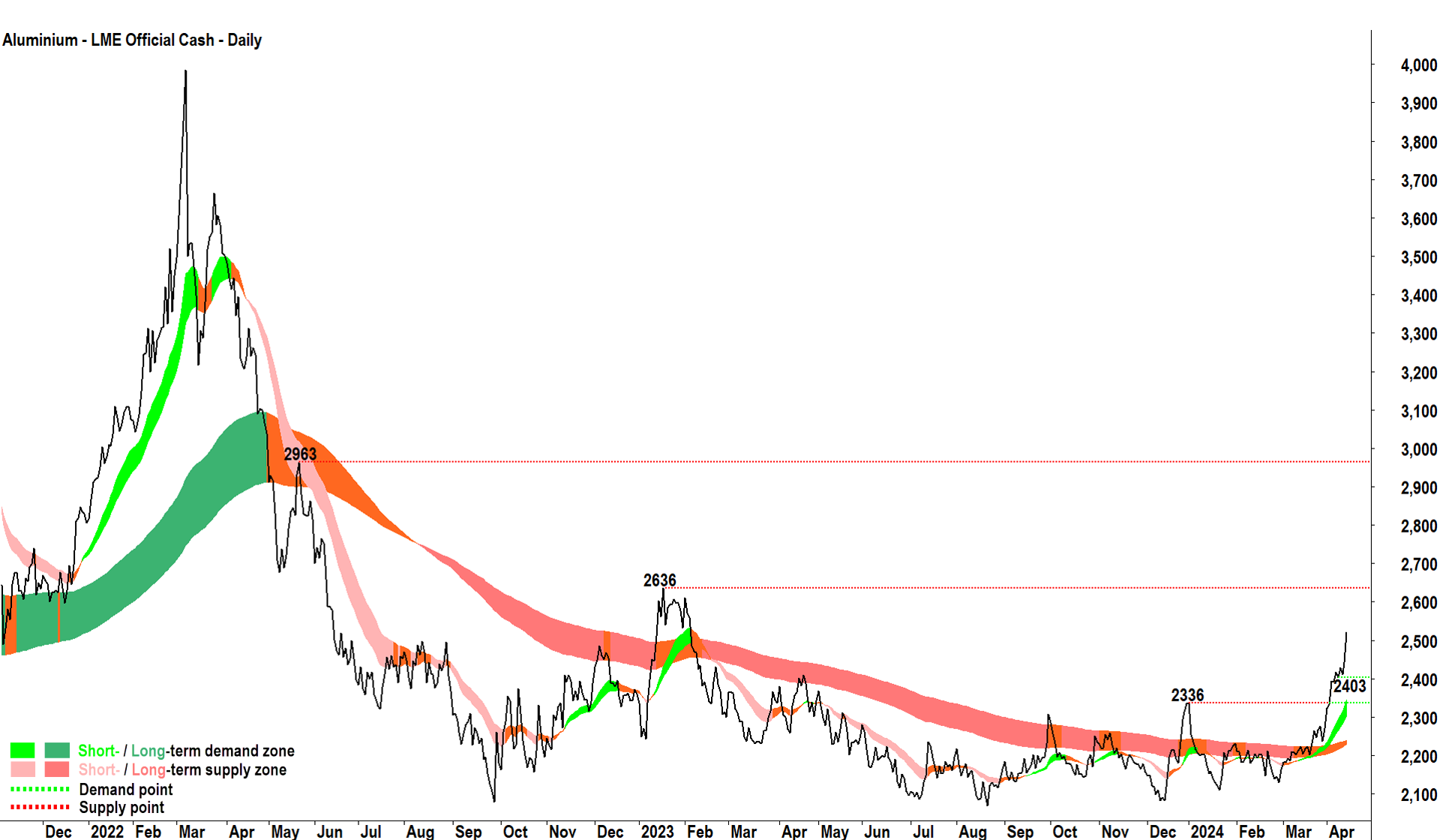
Aluminium prices have been on a tear lately, partly in response to the new sanctions, but also due to increasing demand from China as that country's manufacturing activity has improved markedly since the end of COVID lockdowns.
From a technical analysis standpoint, the chart of LME Aluminium shows an increasingly well-established short-term uptrend and a neutral long-term trend which is converging towards transitioning into a long-term uptrend.
The price action is rising peaks and rising troughs, which indicates a “buy the dip” mentality among market participants.
The zone between 2336 and 2403 is an area of historical demand, while the next key historical point of supply is 2636. If LME Aluminium can close above 2636, the next key historical point of supply is 2963.
ASX aluminium stocks to watch: Alumina (ASX: AWC), BHP Group (ASX: BHP), and South32 (ASX: S32).
Copper impact
Russia is responsible for around 4% of global refined copper production and Russian copper accounts for approximately 60% of LME warehouse inventories. Copper prices were very much already on the move in advance of the new sanctions, but given the substantial proportion of Russian-originated copper in LME warehouses, there will potentially be a similar positive impact felt here as with Aluminium.
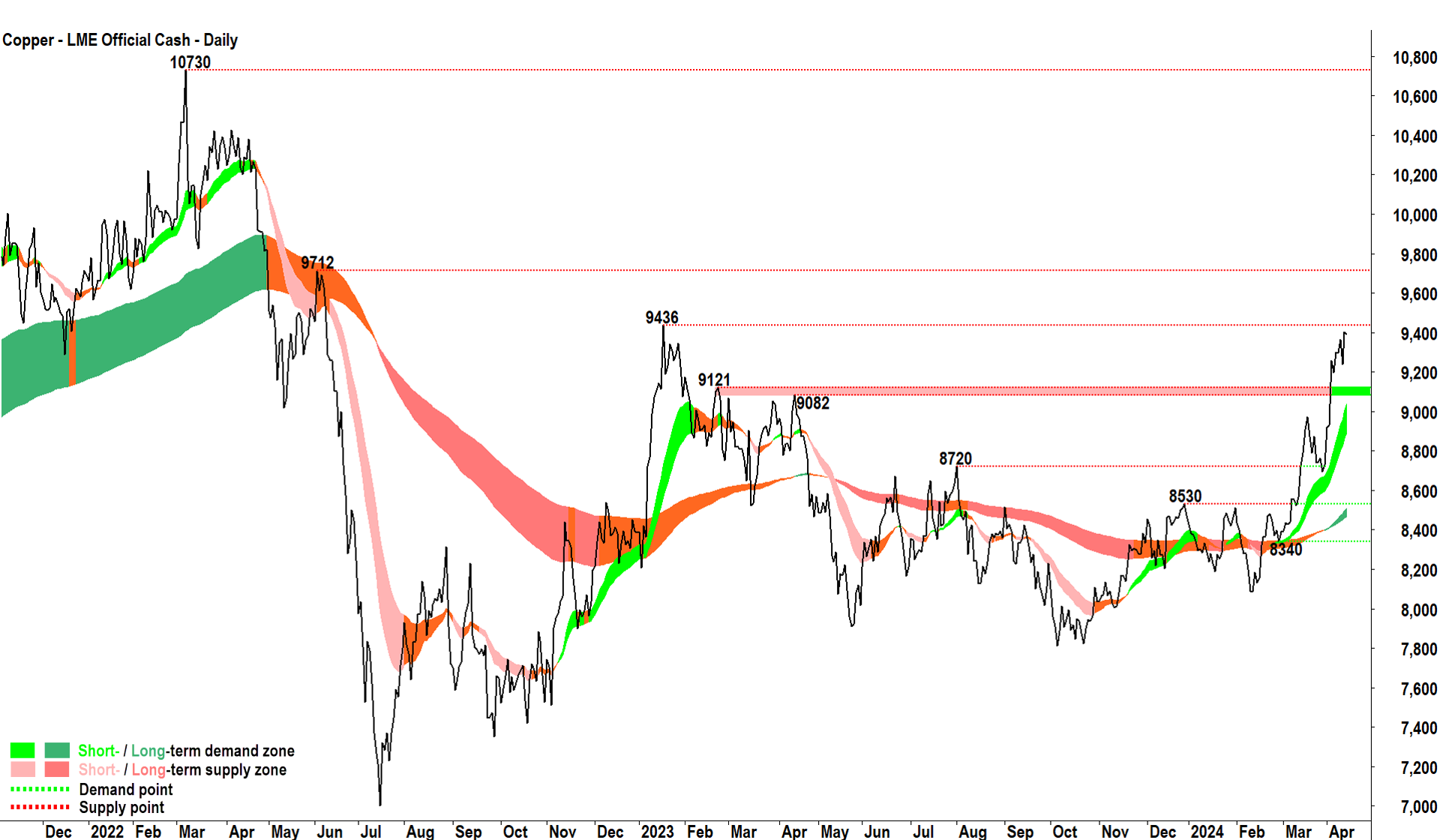
The response to the LME copper price was substantially muted compared to that of Aluminium, in fact, LME Copper actually dipped slightly on Monday.
Still, from a technical analysis standpoint, the chart of LME Copper shows a well-established short-term uptrend and a newly established long-term uptrend. The price action is rising peaks and rising troughs.
The zone between 9082 and 9121 is an area of historical demand, while the next key historical point of supply is 9436. If LME Copper can close above 9436, the next key historical point of supply is 9712.
ASX copper stocks to watch: Everything you need to know about every ASX Copper Producer
Nickel impact
Russia is responsible for around 6% of global nickel production, but as much as 14% of refined nickel products. Approximately 36% of LME warehouse nickel inventories are of Russian origin. This is the least proportion of inventories of the three metals covered by the new sanctions.
It’s also worth noting that cheap supplies of nickel from producers in Indonesia flooded the market in 2023. This caused the LME Nickel price to experience the greatest decline from the post-Ukraine invasion highs of any LME base metal. The LME nickel price has also been the slowest to recover of any base metal since the 2023 lows.
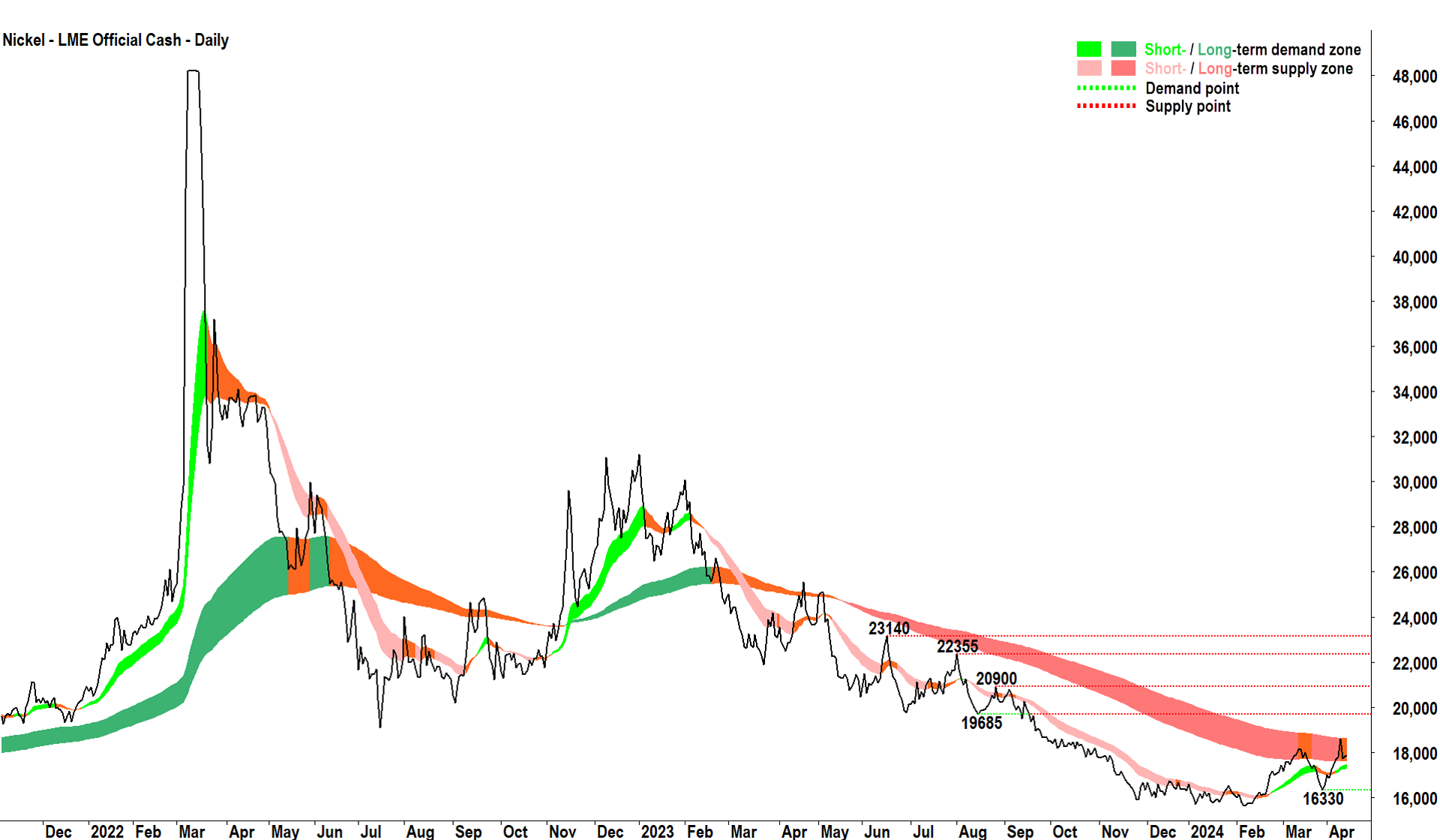
From a technical analysis standpoint, the chart of LME Nickel shows a fledgling short term uptrend and a neutral long term trend. The long term trend is showing only very modest signs of converging towards a transition to a long term uptrend.
This is clearly the weakest set of trends of any of the base metals charts shown here today.
16630 is of historical point of demand, while the next key historical point of supply is 19685. If LME Nickel can close above 19685, the next key historical point of supply is not far away at 20900.
ASX Nickel stocks to watch: BHP Group (ASX: BHP), Centaurus Metals (ASX:CTM), IGO (ASX: IGO), Nickel Industries (ASX: NIC), and South32 (ASX: S32).
How are other LME base metals looking?
LME Lead
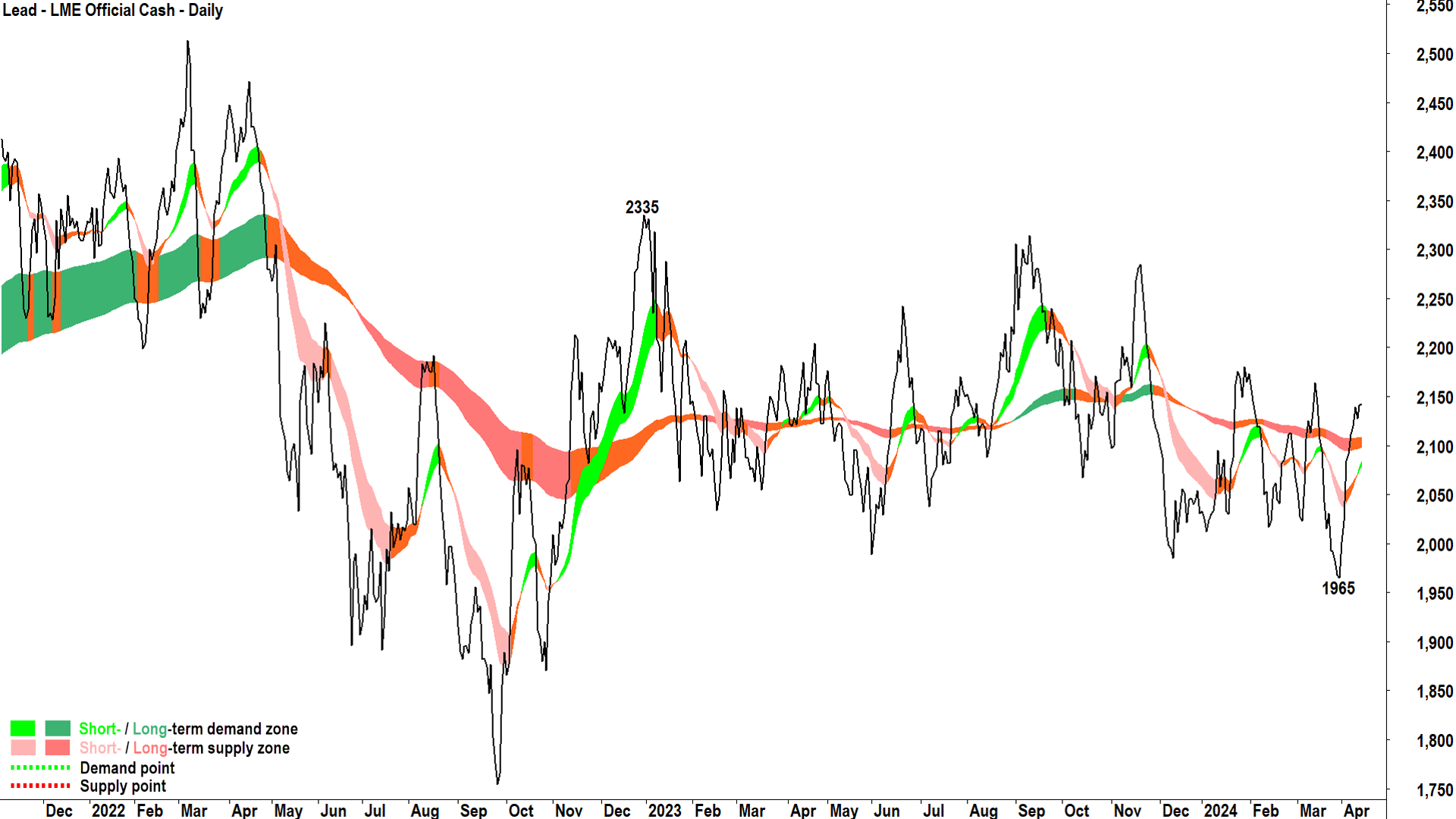
From a technical analysis standpoint, the chart of LME Lead shows a new short-term uptrend but a neutral long-term uptrend. This is the most neutral/choppy of the base metals charts.
A well-defined range between 1965 and 2335 has formed, and a trend is unlikely to establish with any great clarity until a break one way or the other out of this range.
ASX lead stocks to watch: South32 (ASX: S32)
LME Tin
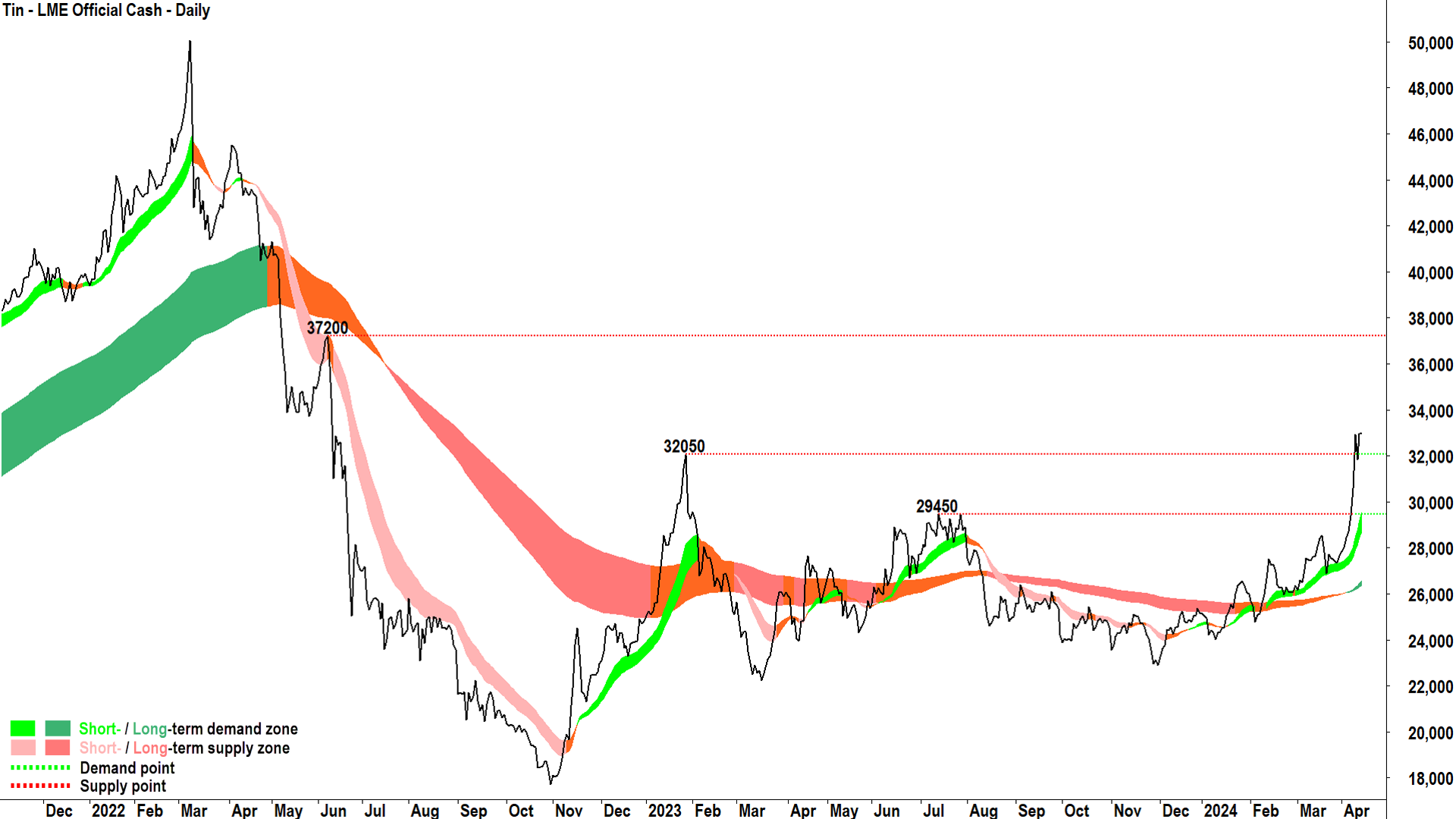
From a technical analysis standpoint, the chart of LME Tin shows a strong and well-established short-term uptrend and a newly established long-term uptrend.
This is the LME base metal that shows the most promise for continued trend extension along with LME Copper. Given it has closed above the historical point of supply of 32050, it likely has more upside than copper to its next key historical point of supply at 37200.
32050 is now a point of demand, and below this, the next key historical point of demand is 29450.
ASX tin stocks to watch: MetalsX (ASX: MLX)
LME Zinc
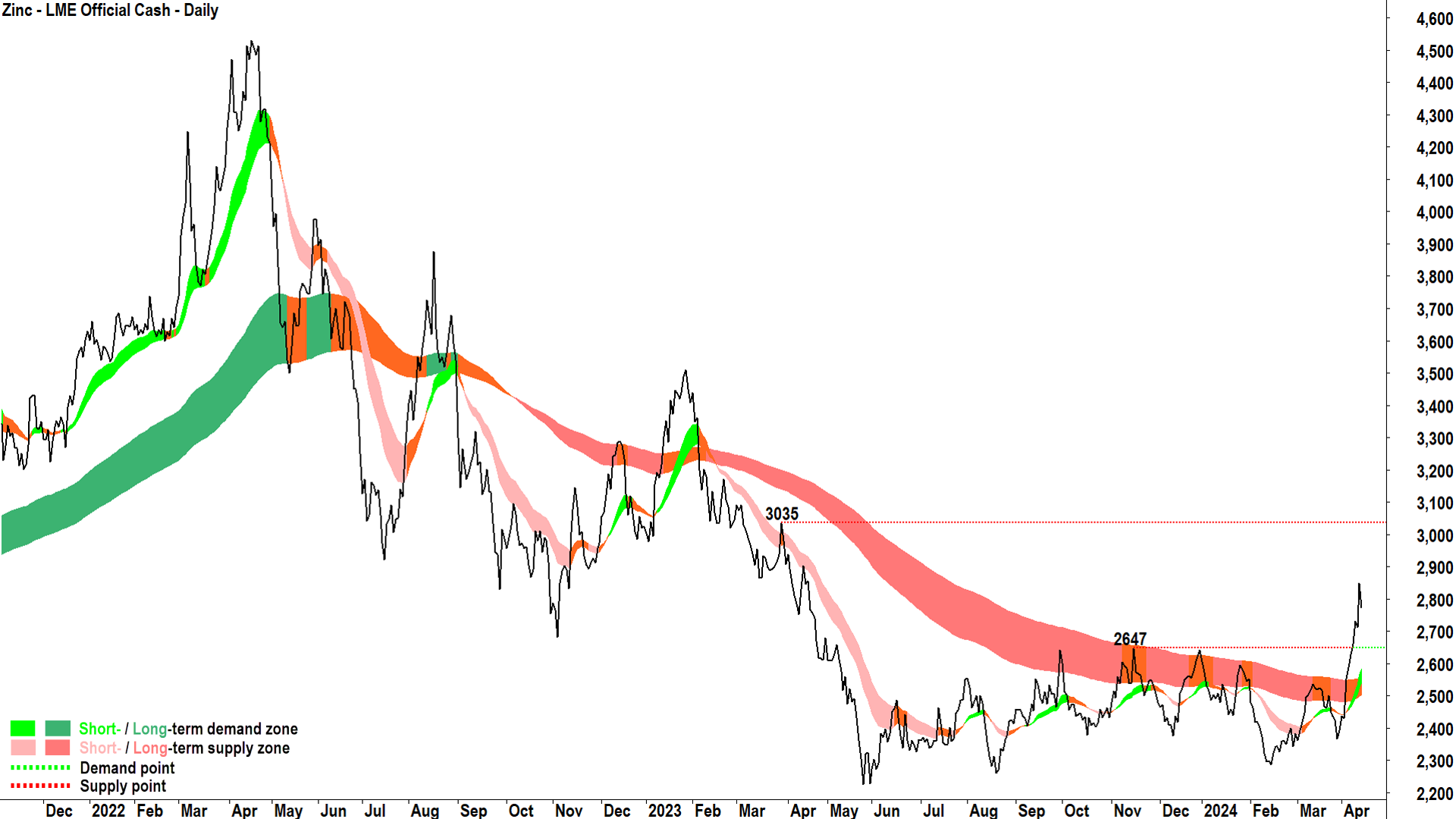
From a technical analysis standpoint, the chart of LME Zinc shows a short-term uptrend and a long-term trend which is converging towards a transition to a long-term uptrend.
It has broken out of a well-defined trading range between 2224 and 2647. 3035 is the next key point of historical supply, while 2647 is the nearest historical point of demand.
ASX zinc stocks to watch: Adriatic Metals (ASX: ADT) and South32 (ASX: S32)
This article first appeared on Market Index on Tuesday 16 April 2024.
5 topics
10 stocks mentioned

